Excursion to Giverny and Auvers sur Oise(Français ![]() )
)
Saturday the 13th of June 2015
From Giverny to Auvers-sur-Oise, we’ll spend the day surrounded by the colors of 19th century Impressionists. An unforgettable tour painted by Monet and Van Gogh.

Come discover Giverny with us. Visit the home and gardens dear to Monet. You’ll discover the Japanese Bridge, the Water Garden and this Impressionist painting genius’ visual universe.
Then we’ll go to Auvers-sur-Oise to visit the village where Vincent van Gogh spent his last 100 days, and painted a few of his most famous creations.
Born in Paris on November 14th, 1840, Monet is one of the Impressionist movement's leaders along with Paul Renoir. Rejecting the classical style imposed by the art schools of his time, Monet states “The motif for me is secondary, what I want to capture, is what lies between the motif and myself”.
In 1883, Monet moved to a house surrounded by more than a hectare of land in Giverny, Upper Normandy. There he planted a large flowered garden to be able to paint come rain or shine. Every day, tirelessly, he would capture on his canvas the fields, trees and Seine. This is where he painted his famous “Nympheas” series.

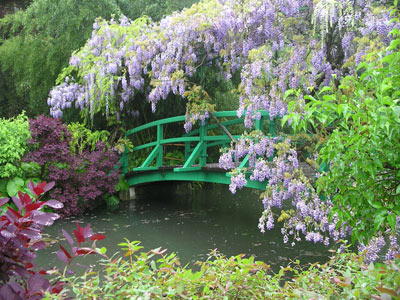
ddffddClaude Monet sdfghdfghdfghdfg Le pont japonais
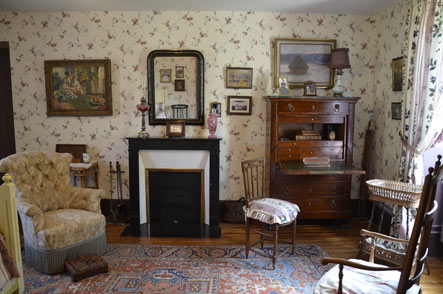

Following major renovations, the house has now recovered its colorful interior decor and quaint intimate charm. Throughout the home’s rooms are exposed, in locations chosen by the Master of Giverny himself, his precious collection of 231 Japanese prints.
The gardens were replanted as they were initially, which allows visitors to admire this “painting using nature itself” that those of Claude Monet’s time considered to be one of his masterpieces. In front of the house and studios, the small Norman style vineyard showcases from spring to fall the changing palette of a “flower crazy” gardener-painter.
Further down, under the shade of weeping willows, the water garden with its famous Japanese Bridge, Wisterias, Rhododendrons and pond are once again the jewel box of sky and water that gave birth to the Nympheas’ visual universe.


Le clos normand sdfghdfghdfghdfg The Japanese Bridge


Nymphéasdfghdfghdfghdfg Les Nymphéas par Claude Monet
AUVERS SUR OISE
Auvers-sur-Oise has inspired numerous painters. It’s Vincent van Gogh that brought it fame in 1890, when he spent the last 3 months of his life there.
From Van Gogh to Pissarro, and Cézanne to Daubigny, this village dating back to the Middle Ages still carries the mark of these late 19th century Impressionists. Auvers-sur-Oise has managed to preserve the charm and peacefulness that seduced Van Gogh and many other painters.
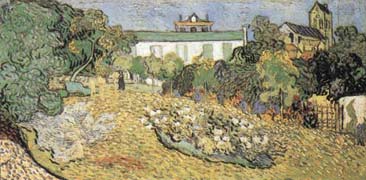

The village of Auvers sur Oise


The Notre-Dame d'Auvers Church
Towering above the village, the Notre-Dame d'Auvers Church was built during the 12th and 13th centuries. This Gothic style building reflects the influence of Notre-Dame de Paris, especially in its variety of column capital elements, human figures and bizarre animals. Van Gogh brought fame to this small parish with his “Church at Auvers”, an oil painting created in 1890 and now exposed at the Orsay Museum, in Paris..
Listed as a historical monument in 1915, the stout old church, perched atop the highest ground in the village, comes to life again thanks to the influx of visitors from all over the world.
The Ravoux Inn
At the heart of the community lies the Ravoux Inn, also known as “The House of Van Gogh”. Along with doctor Gachet’s home, this is where Vincent van Gogh spent most of his time during his 70 days in Auvers-sur-Oise. This is where the painter learned that a certain Anna Boch had bought one of his paintings, the only one he sold while still alive. The Inn, a restaurant and former wine shop over one hundred years old, has managed to preserve its typical late 19th century decor and the friendly atmosphere of the period’s artist cafés. You can visit the painter’s room as it was when he lived there and then committed suicide on July 27th, 1890.



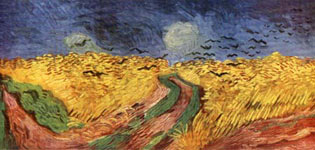
The Van Gogh's tombs dfghdff g "Champ de blé aux corbaux"
A visit to Auvers-sur-Oise would be incomplete without a pilgrimage to the cemetery, which can be found just outside the town, at the edge of a plateau overlooking Oise Valley.Here lies Vincent van Gogh, next to his brother Théo who died six months later. The twin tombs, located near the perimeter wall, are completely covered with ivy.
Van Gogh created his last painting near the cemetery, the one containing crows above a field, just before killing himself.
Daubigny's workshop and museum
Daubigny has been named “Master of the School of Impressionism”. In 1860, he bought a bean-covered field and had an eight by six meter studio built for himself surrounded by “a few rooms”, which became Auvers’ first artist’s hostel.
The interior is unique due to the walls having been entirely decorated by the painter and his friend Camille Corot, as well as his wife and children. According to many visitors, the Daubigny Art Gallery is the most charming and authentic place in Auvers village.
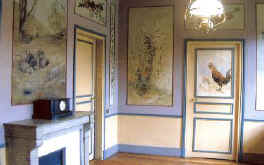

The Absinthe Museum
Thanks to this spirit, ancestor of pastis and outlawed in 1915, the Absinthe Museum gives you an unusual and fresh view of 19th century society. It underlines how important the café was to the everyday lives of this period’s artists where the Impressionists, lovers of the “Green Fairy”, exposed their creations. Much more than a tour, this visit is a voyage through time and the discovery of absinthe’s playful history, accompanied by period music.
The exhibited photos and documents confirm that the late 19th century was devoted to absinthe: it was worshipped, sung about, painted, poems were written for it; it provoked insanity and unleashed passion!


-
Meeting at 7:45 am on the stairs of the Opéra Garnier (metro Opéra, lignes 3-7-8 and RER A, station Auber)
-
Departure for Giverny.
-
Guided tour of Claude Monet’s house and its beautiful gardens
-
Departure for Auvers-sur-Oise
-
Picnic in the park of Auvers-sur-Oise castle
-
Guided tour of the countryside of Auvers, followed by self-guided visit of the city monuments: Ravoux hostel, Colombières house, graveyard, Daubigny museum, the church, the museum of absinth …
-
Arrival to Paris expected around 7:00-7:30 pm.
-
Group leaders phone (in case of problem) :
Day's program : |
|
|
BOOK HERE (Saturday the 13th of June, registration before 13th of June Click here to see the terms of participation |
